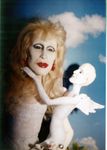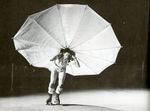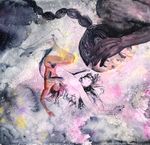| RECENT POSTS DATE 12/11/2025 DATE 12/8/2025 DATE 12/3/2025 DATE 11/30/2025 DATE 11/27/2025 DATE 11/24/2025 DATE 11/22/2025 DATE 11/20/2025 DATE 11/18/2025 DATE 11/17/2025 DATE 11/15/2025 DATE 11/15/2025 DATE 11/14/2025
| | |  CORY REYNOLDS | DATE 3/16/2014In his 1917 Manifesto of Futurist Dance, F.T. Marinetti described an "anti-harmonic ill-mannered anti-gracious asymmetrical synthetic dynamic free-wordist dance." In the Guggenheim's remarkable current exhibition catalog, Italian Futurism, 1909-1944: Reconstructing the Universe, Patrizia Veroli writes, "The Futurists experienced the kinetic problematics of dance as the painters and literati they were, rather than as dancers, thus they tended to consider the performer's body merely a machine for producing certain type of signals on the stage. This is how they entered the world of pantomime, an ancient theatrical genre that had gained a new sense of purpose by the end of the nineteenth century, amid the crisis of other artistic languages. The three war dances Marinetti theorized in his 1917 manifesto are for the most part mimes: the dancer mimics the trajectories of projectiles, sound waves, and the movement of airplanes, explaining her own actions with the signboards typical of the music hall and the silent films of the time." Featured image is of Giannina Censi performing an Aerofuturist Dance in 1931; she drew inspiration from paintings by Enrico Prampolini while Marinetti recited poems on war. These images were later used in Fascist publications presenting examples of strong, healthy female bodies in support of the regime's eugenic goals. Guggenheim Museum Publications
Hbk, 8.5 x 11.5 in. / 352 pgs / 338 color.
 DATE 12/3/2025  DATE 11/27/2025  DATE 11/22/2025  DATE 11/20/2025  DATE 11/18/2025  DATE 11/13/2025  DATE 11/7/2025  DATE 11/4/2025  DATE 11/2/2025  DATE 10/31/2025  DATE 10/28/2025  DATE 10/23/2025  DATE 10/22/2025  DATE 10/22/2025  DATE 10/21/2025  DATE 10/20/2025  DATE 10/16/2025  DATE 10/14/2025  DATE 10/11/2025  DATE 10/7/2025  DATE 10/6/2025  DATE 10/3/2025  DATE 10/1/2025  DATE 9/23/2025  DATE 9/21/2025  DATE 9/17/2025  DATE 9/10/2025  DATE 9/6/2025  DATE 9/4/2025  DATE 9/2/2025  DATE 9/1/2025  DATE 8/27/2025  DATE 8/25/2025  DATE 8/23/2025  DATE 8/21/2025  DATE 8/18/2025  DATE 8/15/2025  DATE 8/12/2025  DATE 8/9/2025  DATE 8/6/2025  DATE 8/5/2025  DATE 7/31/2025  DATE 7/28/2025  DATE 7/25/2025  DATE 7/21/2025  DATE 7/18/2025  DATE 7/11/2025  DATE 7/3/2025  DATE 6/30/2025  DATE 6/26/2025  DATE 6/22/2025  DATE 6/20/2025  DATE 6/13/2025  DATE 6/12/2025  DATE 6/9/2025  DATE 6/5/2025  DATE 6/1/2025  DATE 5/29/2025  DATE 5/28/2025  DATE 5/23/2025  DATE 5/20/2025  DATE 5/16/2025  DATE 5/12/2025  DATE 5/8/2025  DATE 5/6/2025  DATE 5/4/2025  DATE 5/1/2025  DATE 4/24/2025  DATE 4/21/2025  DATE 4/17/2025  DATE 4/14/2025  DATE 4/10/2025  DATE 4/8/2025  DATE 3/31/2025  DATE 3/27/2025  DATE 3/27/2025  DATE 3/20/2025  DATE 3/18/2025  DATE 3/16/2025  DATE 3/15/2025  DATE 3/13/2025  DATE 3/9/2025  DATE 2/19/2025  DATE 2/18/2025  DATE 2/17/2025  DATE 2/15/2025  DATE 2/14/2025  DATE 1/26/2025  DATE 1/20/2025  DATE 1/15/2025 |
|